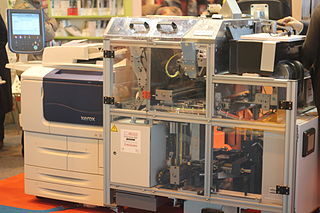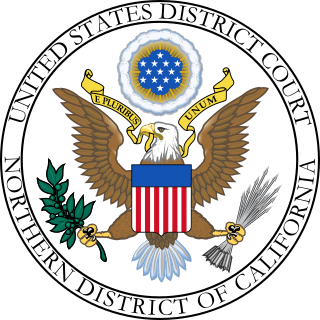
Intellectual property (IP) is a category of property that includes intangible creations of the human intellect. There are many types of intellectual property, and some countries recognize more than others. The best-known types are patents, copyrights, trademarks, and trade secrets. The modern concept of intellectual property developed in England in the 17th and 18th centuries. The term "intellectual property" began to be used in the 19th century, though it was not until the late 20th century that intellectual property became commonplace in most of the world's legal systems.

A patent is a type of intellectual property that gives its owner the legal right to exclude others from making, using, or selling an invention for a limited period of time in exchange for publishing an enabling disclosure of the invention. In most countries, patent rights fall under private law and the patent holder must sue someone infringing the patent in order to enforce their rights.
A royalty payment is a payment made by one party to another that owns a particular asset, for the right to ongoing use of that asset. Royalties are typically agreed upon as a percentage of gross or net revenues derived from the use of an asset or a fixed price per unit sold of an item of such, but there are also other modes and metrics of compensation. A royalty interest is the right to collect a stream of future royalty payments.

Industrial property is one of two subsets of intellectual property, it takes a range of forms, including patents for inventions, industrial designs, trademarks, service marks, layout-designs of integrated circuits, commercial names and designations, geographical indications and protection against unfair competition. In some cases, aspects of intellectual creation, although present, are less clearly defined. The object of industrial property consists of signs conveying information, in particular to consumers, regarding products and services offered on the market. Protection is directed against unauthorized use of such signs that could mislead consumers, and against misleading practices in general.

The Bayh–Dole Act or Patent and Trademark Law Amendments Act is United States legislation permitting ownership by contractors of inventions arising from federal government-funded research. Sponsored by senators, Birch Bayh of Indiana and Bob Dole of Kansas, the Act was adopted in 1980, is codified at 94 Stat. 3015, and in 35 U.S.C. § 200–212, and is implemented by 37 C.F.R. 401 for federal funding agreements with contractors and 37 C.F.R 404 for licensing of inventions owned by the federal government.
First to file and first to invent are legal concepts that define who has the right to the grant of a patent for an invention. Since March 16, 2013, after the United States abandoned its "first to invent/document" system, all countries have operated under the "first-to-file" patent priority requirement.
Intellectual rights to magic methods refers to the legal and ethical debate about the extent to which proprietary or exclusive rights may subsist in the methods or processes by which magic tricks or illusions are performed. It is a subject of some controversy.
The United States is considered to have the most favorable legal regime for inventors and patent owners in the world. Under United States law, a patent is a right granted to the inventor of a (1) process, machine, article of manufacture, or composition of matter, (2) that is new, useful, and non-obvious. A patent is the right to exclude others, for a limited time from profiting from a patented technology without the consent of the patent holder. Specifically, it is the right to exclude others from: making, using, selling, offering for sale, importing, inducing others to infringe, applying for an FDA approval, and/or offering a product specially adapted for practice of the patent.
This is a list of legal terms relating to patents and patent law. A patent is not a right to practice or use the invention claimed therein, but a territorial right to exclude others from commercially exploiting the invention, granted to an inventor or their successor in rights in exchange to a public disclosure of the invention.
Scams in intellectual property include scams in which inventors and other rights holders are lured to pay money for an apparently official registration of their intellectual property, or for professional development and promotion of their ideas, but do not receive the expected services.
Title 35 of the United States Code is a title of United States Code regarding patent law. The sections of Title 35 govern all aspects of patent law in the United States. There are currently 37 chapters, which include 376 sections, in Title 35.
The South African patent system is the system by which patents are granted in South Africa.

The Espresso Book Machine (EBM) was a print on demand (POD) machine created by On Demand Books. It printed, collated, covered, and bound a single book in a few minutes.

Jacobsen v. Katzer was a lawsuit between Robert Jacobsen (plaintiff) and Matthew Katzer (defendant), filed March 13, 2006 in the United States District Court for the Northern District of California. The case addressed claims on copyright, patent invalidity, cybersquatting, and Digital Millennium Copyright Act issues arising from Jacobsen under an open source license developing control software for model trains.

A trademark is a type of intellectual property consisting of a recognizable sign, design, or expression that identifies a product or service from a particular source and distinguishes it from others. A trademark owner can be an individual, business organization, or any legal entity. A trademark may be located on a package, a label, a voucher, or on the product itself. Trademarks used to identify services are sometimes called service marks.
The Copyright Clause describes an enumerated power listed in the United States Constitution.
Cybersquatting is the practice of registering, trafficking in, or using an Internet domain name, with a bad faith intent to profit from the goodwill of a trademark belonging to someone else.

Iran is a member of the WIPO since 2001 and has acceded to several WIPO intellectual property treaties. Iran joined the Convention for the Protection of Industrial Property in 1959. In December 2003 Iran became a party to the Madrid Agreement and the Madrid Protocol for the International Registration of Marks. In 2005 Iran joined the Lisbon Agreement for the Protection of Appellations of Origin and their International Registration, which ensures the protection of geographical names associated with products. As at February 2008 Iran had yet to accede to The Hague Agreement for the Protection of Industrial Designs.

The following outline is provided as an overview of and topical guide to patents:
Intellectual property of Ethiopia is managed by the Ethiopian Intellectual Property Office (EIFO), who oversees Intellectual Property Right (IPR) issues. Ethiopia has not signed IPR treaty such as the Paris Convention for the Protection of Industrial Property, the World Intellectual Property Organization (WIPO) copyright treaty, the Berne Convention for Literary and Artistic Works, the Madrid System for the International Registration of Marks, and the Patent Cooperation Treaty.





